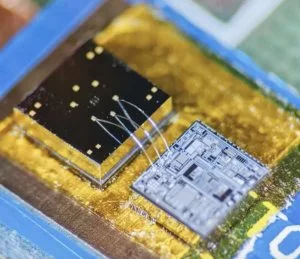Daily substantial advancements are being made in the world of wearables, especially for health-related applications. Most of our fantasies around real-time, round-the-clock, non-invasive, out-of-the-way, monitoring of health parameters are now beyond dreams as researchers continue to cut away through hindrances and unlock new levels of possibilities.
One of such new level of possibilities are the capabilities of a new chip developed by researchers at the Georgia Institute of Technology, which comes in a size smaller than a ladybug, and is able to capture multiple body vitals including movements and critical lungs and heart signals.
Aptly called an Accelerometer Contact Microphone, the chip acts as a combination of an advanced electronic stethoscope an accelerometer, bringing to life the ages long desire of medical practitioners to use the body’s mechanical signals for diagnosis.
The core mechanism of the chip features two finely manufactured layers of silicon, which overlay each other separated by the space of 270 nanometers – about 0.005 the width of a human hair. The silicon layers carry a minute voltage which is put in flux by vibrations from body motion and sounds, creating a readable electronic output that could provide information on different parts of the human body. The silicon layer technology adopted in the chip allows it to detect vibrations from inside the body and filter out vibration and noise from outside the body’s core.
Read more: SUPER SENSOR ON A CHIP CAN MONITOR THE HEART AND LUNGS USING SOUNDS/VIBRATIONS

